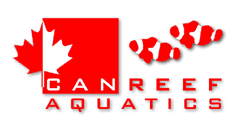
 |
|
#11
|
||||
|
||||
|
The only thing I see that looks odd is your Ph (low) Possibly ph shock. and I get roused everytime I take mine in and its at 8.3 how is the KH? As for the ammonia I assume its more your reading the test strip as nitrates are zero. I myself havent even dared keeping an anenome yet as i hear they are tough to keep. So you are doing something right.
|
|
#12
|
|||||
|
|||||
|
All very good advice.
Forget about what your LFS is saying. He makes money selling you fish and reselling them when they die. In a small tank you should be only adding one fish at a time once a month. The tank adjusts slowly. If an animal dies you must remove it or is will cause your tank to have an ammonia and than nitrite spike and kill everything. Do not add any fish to your tank until everything stabilizes and do not add any further chemicals. Patience is the key in this hobby, eh |
|
#13
|
|||||
|
|||||
|
Quote:
The point in adding fish slowly to a tank is to build up the bacteria you need...which needs ammonia to form..but a tank can only process so much at one time...the bacteria doesn't keep growing and growing...it grows as more ammonia is added...to much the system cannot cope....so you have to think of it like this...every time you add a fish you are essentially doing a little cycle. also...since you are new...try testing your replacement water for everything you test your tank for...see how everything compares...
__________________
I once had a Big tank...I now have two Huskies and a coyote Last edited by Pan; 03-18-2009 at 05:07 AM. |
|
#14
|
||||
|
||||
|
Interesting...The pH has always been low which was why it was suggested I use the buff to help increase it...not sure how else to do it...
The ammonia, nitrite and nitrate reading were all from the test kit...only the alk and pH are from the test strips... Thanks for the encouraging words...I just wish my clowns were still around to enjoy the annenome. |
|
#15
|
||||
|
||||
|
I would be more than happy to test your water for you, What kind of water are you using? Reverse osmosis water the Ph is very low. and you will definitely have to raise with a buffer.
|
|
#16
|
||||
|
||||
|
Quote:
I will start cleaning the fluval weekly with the water changes...I do have a CUC in there consisting over small burrowing snails, big (I think Turbo) snails and some little hermit crabs...they are all doing fine. Quote:
Quote:
|
|
#17
|
||||
|
||||
|
Just regular tap water with that concentrated tap water conditioner...I dont have a fancy RO machine...
|
|
#18
|
|||||
|
|||||
|
Quote:
The test kits you have are not very high quality, and their accuracy is hot or miss at best. I believe your pH is low (which is often the case in new tanks) I don't believe your pH is that low provided you have aragonite sand in the tank, and use marine salt in your water! I also don't believe you have an ammonia reading without seeing nitrite. If you have ammonia in a cycled tank you should have nitrite as well. You could have nitrite without ammonia though, but it would be a sign that ammonia was recently present. I believe that either you DO have ammonia, but also have nitrite, or you don't have ammonia and may or may not have nitrite. Doing a water change is a good idea. 10-15% is definately not too much, you can do 90% water changes provided you match specific gravity, temperature, and pH very closely. For smaller water changes as long as you're close on the temp and salinity you should be good to go. Make sure you allow fresh saltwater to mix with a powerhead and heater for 24 hours before using it for a water change. Your specific gravity is far too low for a reef tank, it should be 1.026. Slowly raise it up to that level over a week or ten days. Take your hydrometer (assuming you're using a swing arm hydrometer) to your LFS and get them to check it's accuracy at 1.026 against their refractometer so that you know how much your hydrometer it out by. Almost all hydrometers are out, by as much as 0.008 I have seen! You need to get a more accurate reading for your alkalinity. 120-160 ppm is a huge gap. 120 is too low, and 160 is barely high enough. Take a quick skim through the chemistry guide and the getting started guide in my signature. You might find some key information in there you are missing. Last edited by Myka; 03-18-2009 at 05:33 AM. |
|
#19
|
|||||
|
|||||
|
This is likely a major part of your problems. Tap water is not good and has alot of dissolved elements you don't want. Probably even more so in Alberta than here on the West Coast. Get an RO/DI machine or buy RO/DI water from a purified water supplier. You can probably find them in the yellow pages. Some grocery stores and Walmarts also have the Culligan RO machines that dispense purified water.
|
|
#20
|
|||||
|
|||||
|
What brand of salt are you using?
|